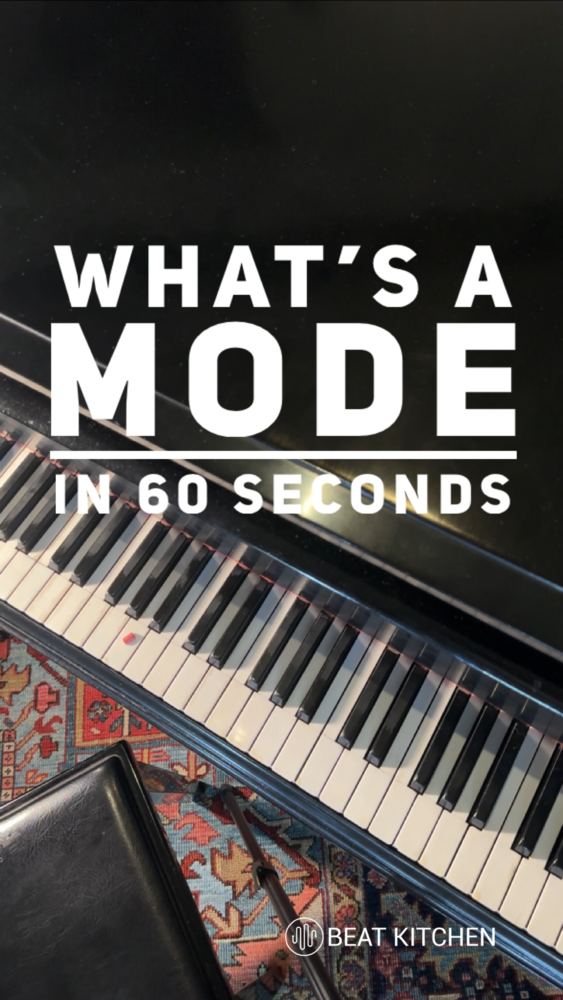Okay, in 60 seconds, what do I mean when I say something sounds modal? The word has broad applications, but you can imagine it this way. Pick a scale, plant one foot firmly on one of its notes.
Now take one finger and create a melody that moves around it. If the result has something like an ancient feel, if it sounds archaic, like it belongs on an old ship or in a renaissance fair, that’s a quality I associate with modality. Now as you start adding notes and chords, you may find the focus softens, and that feeling becomes less distinct.
And often in music, there are just moments of modality. It doesn’t have to be all one way or the other. There’s a mode for each of the seven notes, but you can build on that framework to create others.
There are a few that you will hear referred to commonly, like the Aeolian, which is based on the sixth degree of the scale, or the Dorian, which is based on the second. You might see the Mixolydian, which is based on the fifth. Start with two fingers and see if you get a sense of that modal sound.
Music theory gym meets every week. You can just come ask me about it.

